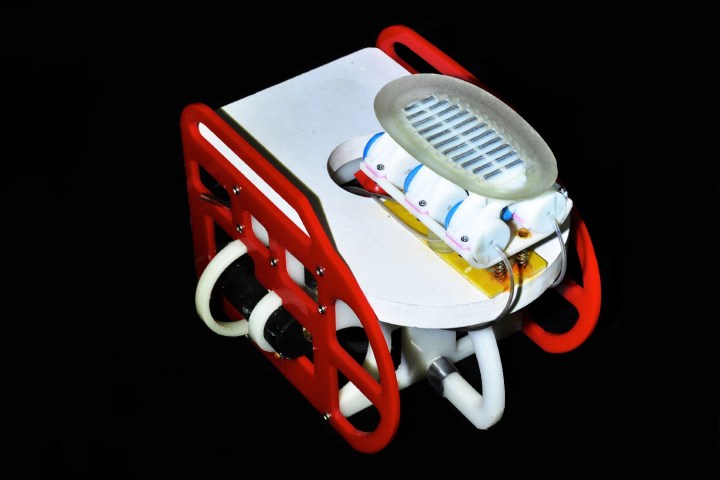
Li Wen, a researcher on the project from Beihang University, says he was inspired to develop the project while working on 3D-printed shark skin research at Harvard University in 2012. While trying to find a good image of a shark for his academic paper, he noticed that, attached to the shark in one picture, was a small creature called a remora — or suckerfish.
“We are amazed by the structure of remora’s suction disc, which lets it hitchhike on a variety of hosts,” Wen told Digital Trends. “[As a result], we decided to start this bio-robotic remora project. There are several applications for this remora disc robot. For example, we can use this bio-robotic disc as a tag to monitor marine animals. We can also use this disc to grip large, flat objects underwater, or integrate it with an underwater robot, therefore allowing it to hitchhike to save power.”

Although there are plenty of innovative underwater robots, developing materials that are capable of gripping to things underwater is a major challenge in its own right. In the past, we covered other intriguing attempts at solving this problem, such as a U.S. Navy project which aims to replicate the proteins in mussels to create underwater glue. In the case of the remora disc robot, researchers could have found a workable alternative method, however.
In tests, their artificial suction cup — which incorporates 1,000 carbon fiber “spinules” to help it stay connected — was able to withstand the forces that would be exerted on it by a shark swimming at a speed of five feet per second. The suction disc can be attached to a wide variety of surfaces, including shark skin, and removing it requires forces of more than 340 times its weight.
“So far, we haven’t tried hitchhiking this robot on a swimming shark or a live dolphin yet, but that is certainly interesting and challenging,” Wen said. “We are working towards a more reliable underwater attachment device to meet [this] real-world application.”
A paper describing the work was recently published in the journal Science Robotics.


